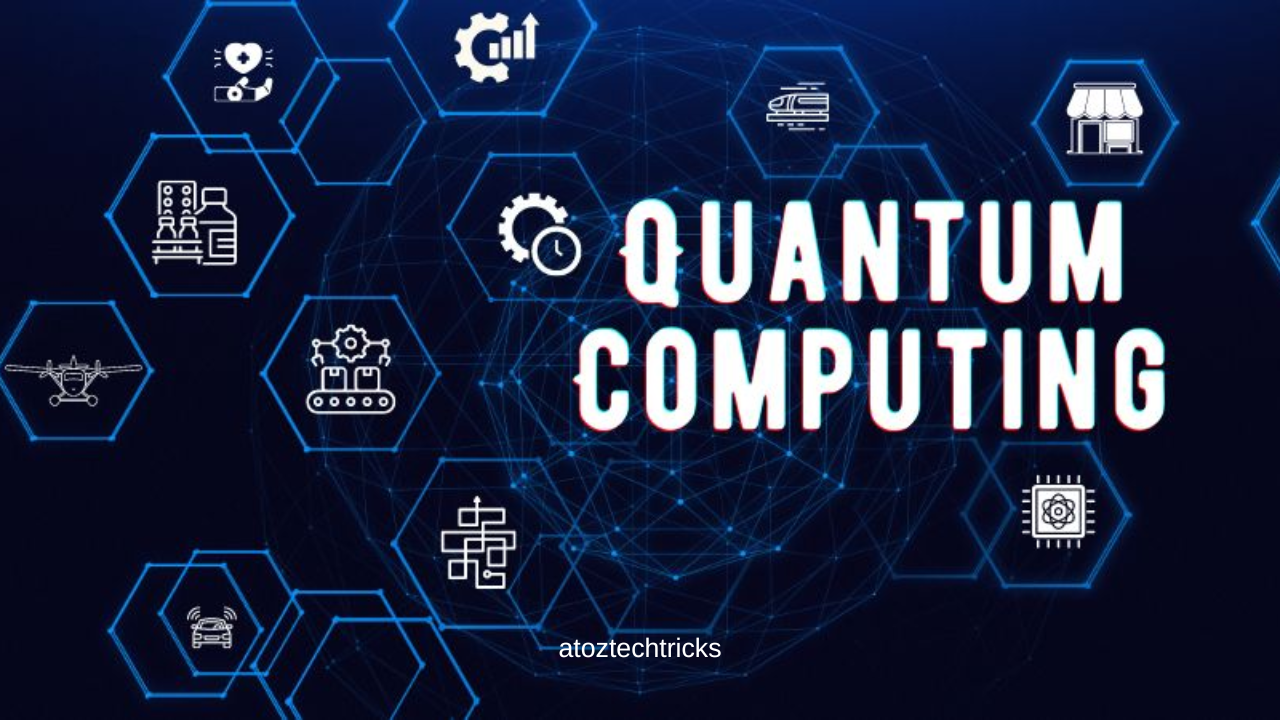Impact of Blockchain on Traditional Industries
Blockchain technology, often associated with cryptocurrencies like Bitcoin, has evolved beyond its initial applications and is now making significant strides in various traditional industries. The decentralized, immutable, and transparent nature of blockchain offers transformative potential for sectors ranging from finance to supply chain management. This article delves into the impact of blockchain on traditional industries, exploring its benefits, challenges, and future implications.
1. Introduction to Blockchain Technology
Blockchain is a decentralized digital ledger that records transactions across a network of computers in a way that is secure, transparent, and tamper-proof. Unlike traditional databases, where a central authority manages data, blockchain operates on a distributed network of nodes, each maintaining a copy of the ledger. This decentralized approach enhances security and trust, making blockchain a revolutionary technology with broad applications.
2. Impact on Financial Services
2.1 Enhanced Security and Fraud Prevention
In the financial sector, blockchain technology provides a robust solution to issues related to fraud and data breaches. Traditional banking systems rely on central databases, which are vulnerable to cyber-attacks and internal fraud. Blockchain’s decentralized nature makes it significantly harder for malicious actors to tamper with data. Each transaction is encrypted and added to a block, which is then linked to the previous block. This chain of blocks creates a secure and verifiable record of transactions, reducing the risk of fraud.
2.2 Streamlined Cross-Border Payments
Cross-border payments have traditionally been slow and costly due to intermediaries, currency conversions, and varying regulations. Blockchain technology can simplify and expedite these transactions by enabling direct transfers between parties. For instance, Ripple, a blockchain-based payment protocol, facilitates near-instantaneous cross-border transactions at lower costs compared to traditional banking systems. This efficiency is achieved through smart contracts and consensus mechanisms, which eliminate the need for intermediaries.
2.3 Improved Transparency and Compliance
Blockchain’s transparent ledger ensures that all transactions are visible to authorized participants, enhancing accountability and regulatory compliance. Financial institutions can leverage blockchain to track transactions in real time, simplifying auditing processes and improving regulatory adherence. This increased transparency helps in preventing money laundering and other illicit activities by providing a clear audit trail.

3. Transformation in Supply Chain Management
3.1 Enhanced Traceability and Transparency
Supply chain management benefits greatly from blockchain’s ability to provide end-to-end visibility of goods as they move through the supply chain. Traditional supply chains often suffer from opacity, making it difficult to trace the origin of products and verify their authenticity. Blockchain addresses these challenges by creating an immutable record of each step in the supply chain. For example, Walmart and IBM have collaborated on a blockchain-based system to track the origin of food products, significantly improving traceability and reducing the time needed to identify and address food safety issues.
3.2 Reduced Fraud and Counterfeiting
Counterfeiting and fraud are major concerns in global supply chains, particularly in industries like pharmaceuticals and luxury goods. Blockchain technology can combat these issues by providing a secure and verifiable record of each transaction. By using blockchain, companies can ensure that products are genuine and have not been tampered with. This capability is particularly valuable in industries where the authenticity of products is crucial for consumer trust and safety.
3.3 Efficient and Cost-Effective Processes
Blockchain can streamline supply chain processes by automating tasks through smart contracts. Smart contracts are self-executing contracts with the terms of the agreement directly written into code. They automatically enforce and execute contract terms when predefined conditions are met, reducing the need for intermediaries and manual processing. This automation leads to cost savings, reduced errors, and faster transaction times.
Applications of Blockchain Beyond Cryptocurrency: Transforming Industries and Driving Innovation
4. Disruption in Healthcare
4.1 Secure and Interoperable Health Records
In healthcare, blockchain technology addresses the challenge of managing and sharing patient data securely. Traditional health record systems often suffer from issues related to data fragmentation and lack of interoperability. Blockchain can provide a unified and secure platform for storing and sharing patient records. By using blockchain, healthcare providers can ensure that patient data is accurate, accessible only to authorized individuals, and tamper-proof. This improved data integrity enhances patient care and facilitates better coordination between healthcare providers.
4.2 Enhanced Drug Traceability and Supply Chain Integrity
Blockchain technology can also improve the traceability of pharmaceutical products, helping to combat issues like counterfeit drugs and supply chain fraud. By recording every transaction in a blockchain ledger, pharmaceutical companies can track the journey of drugs from production to distribution. This traceability ensures that drugs are authentic and have been handled properly throughout the supply chain, ultimately improving patient safety and regulatory compliance.
4.3 Efficient Clinical Trials and Research
Blockchain’s transparency and immutability offer significant benefits for clinical trials and medical research. Traditional research processes often face challenges related to data integrity and transparency. Blockchain can provide a secure and verifiable record of research data, ensuring that it is accurate and tamper-proof. Additionally, blockchain can facilitate more efficient and transparent collaboration between researchers, reducing the risk of data manipulation and enhancing the credibility of research findings.
5. Revolutionizing Real Estate
5.1 Simplified Property Transactions
Real estate transactions are often complex, involving multiple parties and lengthy paperwork. Blockchain technology can simplify this process by providing a transparent and immutable record of property ownership and transactions. Smart contracts can automate the transfer of ownership and payment, reducing the need for intermediaries like brokers and title companies. This automation streamlines transactions, reduces costs, and speeds up the process of buying and selling property.
5.2 Enhanced Property Management
Blockchain can also improve property management by providing a secure and transparent record of rental agreements, maintenance records, and other property-related documents. Landlords and tenants can use blockchain to manage lease agreements, track payments, and handle maintenance requests more efficiently. This increased transparency and automation enhance the overall management experience for both property owners and tenants.
5.3 Improved Fraud Prevention
Fraud is a significant concern in the real estate industry, particularly in property transactions and ownership records. Blockchain technology can mitigate these risks by providing an immutable and transparent record of property ownership and transactions. This capability ensures that ownership records are accurate and tamper-proof, reducing the risk of fraudulent activities and disputes.
The Potential for Blockchain in Improving Supply Chain Management
6. Impact on the Energy Sector
6.1 Decentralized Energy Trading
Blockchain technology has the potential to transform the energy sector by enabling decentralized energy trading. Traditional energy markets are often centralized, with large utility companies controlling the distribution and sale of energy. Blockchain can facilitate peer-to-peer energy trading, allowing individuals and businesses to buy and sell energy directly. This decentralized approach can lead to more efficient energy markets, lower costs, and increased access to renewable energy sources.
6.2 Improved Energy Grid Management
Blockchain can also enhance the management of energy grids by providing a secure and transparent platform for tracking energy production and consumption. Smart contracts can automate the balancing of supply and demand, ensuring that energy is distributed efficiently and reducing the risk of blackouts. Additionally, blockchain can facilitate the integration of renewable energy sources into the grid by providing a secure and transparent record of energy transactions.
6.3 Enhanced Transparency and Accountability
Transparency and accountability are critical in the energy sector, particularly when it comes to tracking the origin and impact of energy sources. Blockchain technology can provide a clear and verifiable record of energy production and consumption, allowing consumers to make informed decisions about their energy use. This increased transparency can also support efforts to reduce carbon emissions and promote sustainable energy practices.

7. Challenges and Considerations
7.1 Scalability and Performance
One of the key challenges facing blockchain technology is scalability. As blockchain networks grow, they can encounter performance issues related to transaction speed and processing capacity. Addressing these scalability challenges is essential for ensuring that blockchain can effectively support large-scale applications in traditional industries.
7.2 Regulatory and Legal Issues
The adoption of blockchain technology in traditional industries also raises regulatory and legal considerations. Governments and regulatory bodies are still developing frameworks to address issues related to data privacy, security, and compliance. Navigating these regulatory challenges is crucial for ensuring that blockchain implementations meet legal requirements and industry standards.
7.3 Integration with Existing Systems
Integrating blockchain technology with existing systems and processes can be complex and costly. Traditional industries often rely on legacy systems that may not be compatible with blockchain solutions. Addressing these integration challenges requires careful planning and coordination to ensure a smooth transition and minimize disruptions.
Government Regulations and Policies Surrounding Blockchain: A Comprehensive Overview
8. Future Implications and Trends
8.1 Increasing Adoption Across Industries
As blockchain technology continues to mature, its adoption across traditional industries is expected to increase. Sectors such as finance, supply chain management, healthcare, real estate, and energy are likely to see continued innovations and implementations of blockchain solutions. The growing recognition of blockchain’s benefits will drive further investment and development in this technology.
8.2 Emergence of New Business Models
Blockchain technology has the potential to create new business models and opportunities. For example, decentralized finance (DeFi) is an emerging trend that leverages blockchain to create alternative financial services and products. Similarly, blockchain-based platforms for decentralized applications (dApps) are opening up new possibilities for innovation and entrepreneurship.
8.3 Enhanced Collaboration and Interoperability
The future of blockchain in traditional industries will likely involve increased collaboration and interoperability between different blockchain networks and platforms. Efforts to standardize blockchain protocols and facilitate cross-chain interactions will enhance the overall effectiveness and scalability of blockchain solutions.
Blockchain technology has the potential to significantly impact traditional industries by offering solutions to long-standing challenges related to security, transparency, efficiency, and fraud prevention. Its applications in finance, supply chain management, healthcare, real estate, and energy demonstrate its transformative capabilities. While challenges related to scalability, regulation, and integration remain, the continued evolution and adoption of blockchain technology promise to drive innovation and reshape traditional industries in the years to come. As organizations explore and implement blockchain solutions, they will need to navigate these challenges and embrace the opportunities that blockchain offers to stay competitive in an increasingly digital world.




Post Comment